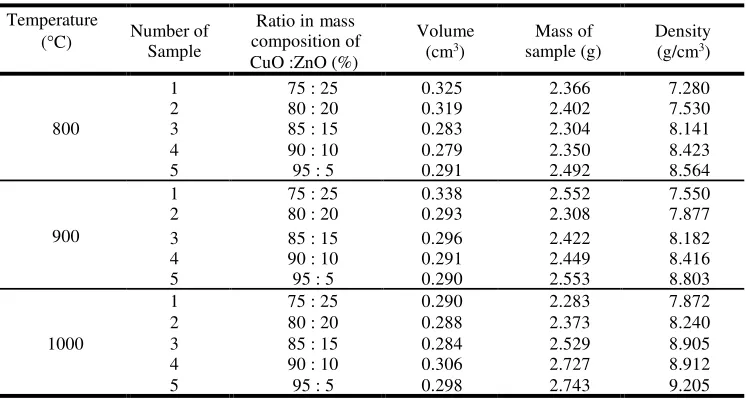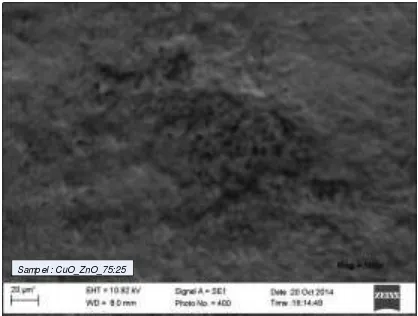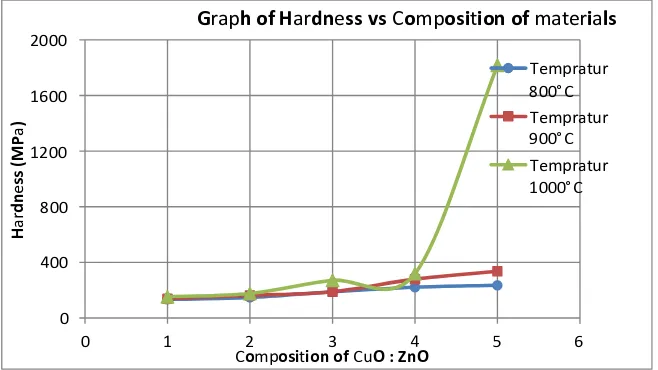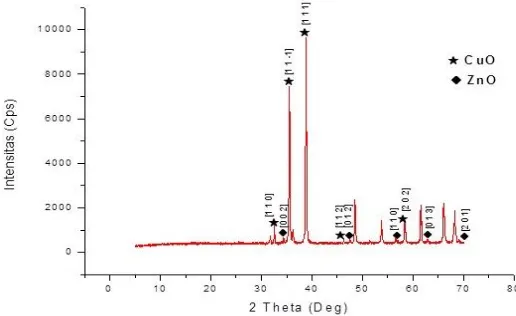All sources 23 Internet sources 15 Own documents 3 Organization archive 4 Plagiarism Prevention Pool 1
[0] repository.usu.ac.id/bitstream/handle/123456789/57685/Reference.pdf;sequence=1 3.8% 8 matches
[1] "artikel membran baru.doc" dated 2017-12-30 0.7% 2 matches
[2] https://www.sciencedirect.com/science/article/pii/S0378775308000888 0.9% 1 matches
[3] https://www.deepdyve.com/lp/elsevier/pre...e-ceramic-3J2sKsp00g 0.9% 1 matches
2 documents with identical matches
[9] https://vdocuments.mx/documents/effect-o...2-nanocomposite.html 0.9% 1 matches
[10] www.freepatentsonline.com/8761877.html 0.9% 1 matches
[11] downloads.hindawi.com/journals/jnm/2016/1280236.xml 0.9% 1 matches
[12] https://patents.google.com/patent/US8761877B2/en 0.9% 1 matches
[13] https://dl.acm.org/citation.cfm?id=2985853 0.9% 1 matches
[14] https://www.hindawi.com/journals/jnm/2016/1280236/ref/ 0.9% 1 matches
[15] https://vdocuments.mx/documents/preparat...t-nanocomposite.html 0.9% 1 matches
[16]
www.yz.zjut.edu.cn/dr/article.asp?aid=333 0.9% 1 matches
4 documents with identical matches [21] "5257-7807-1-RV.docx" dated 2018-04-05
[25] "SEM INTERNATIONAL Biology_2017.doc" dated 2017-09-08 0.5% 1 matches
[26] from a PlagScan document dated 2017-12-13 13:48 0.4% 1 matches
1 documents with identical matches
5.3%
Results of plagiarism analysis from 2018-04-28 16:58 UTC
5439-8623-1-RV.docx
7 pages, 2312 words
PlagLevel: selected / overall
13 matches from 30 sources, of which 21 are online sources.
Settings
Data policy: Compare with web sources, Check against my documents, Check against my documents in the organization repository, Check against organization repository, Check against the Plagiarism Prevention Pool
Sensitivity: Medium
Bibliography: Consider text
--[23]
Fabrication of Ceramic Composites Based on CuO-ZnO
Susilawati1 *,3, Tulus Ikhsan Nasution , Moraida Hasanah and Yuan Alfinsyah 1,3 2
Sihombing1,3
1 Physics Department, Faculty of Mathematics and Natural Science, Universitas Sumatera Utara, Medan, 20155, Indonesia.
2 Mechanical Engineering Department, University of Asahan, Asahan, Indonesia.
3 Center of Excellence Green Chitosan and Advance Materials, Universitas Sumatera
Utara, Medan, 20155, Indonesia.
*Email : susilawati.71274@yahoo.com
Abstract. CuO-ZnO ceramic composites have been obtained by pressing conventional method. The composite materials are CuO and ZnO powders with ratio in mass composition of CuO and ZnO are 75%:25%, 80%:20%, 85%:15%, 90%:10% and 95%:5%. The samples were made by three steps. The first step, CuO and ZnO powders are sieved with particle size of 100 mesh. Then, both of powders are mixed until homogeneous for 5 minutes with dry mixing method. The second step, the homogeneous powders are fabricated with pressure at 300 MPa for 10 minutes to form a pellet. The last step, the pellet was burned by furnace at temperatures 800 C, o 900oC
and 1000oC for 3 hours. Each sample that has been burned was characterized by physical properties (density), morphological analysis (SEM), mechanical properties (compressive strength and hardness) and crystalline structural analysis (XRD). The results of characterization show that optimum ratio in mass composition of CuO and ZnO is 95%:5% at 1000 C temperature. It has the highest density of 9.205 g/cm while o 3
the highest of compressive strength is 218.799 MPa, the highest hardness is 1816.920 MPa and morphological structures are evenly distributed.
1.Introduction
The composite materials are a blend of two or more selected materials based on combination of physical properties of each constituent materials to produce new materials with better physical, mechanical and electrical properties. One of composite materials is Ceramic Matrix Composites (CMCs). CMCs consists of two-phases. One phase as reinforcement and the other as a matrix. CMCs are one of the alternative materials that can be used for many applications because its dimension is stable and more stable then metals. The typical properties of CMCs are high toughness, high thermal stability, high corrosion resistance at high temperatures and high mechanical strength [1,2].
Oxide materials are formed when elements were oxidized by oxygen in the air. There is no pure element because every element has oxide sheath. For example Copper Oxide (CuO). CuO is a ceramic material that is often used in daily. The copper oxide was used as pigment in ceramic for produces a colour in ceramic like a blue, red, green and the others colour [3].
Some of recent research about conductive ceramics are Huang et al have used conductive-ceramic of ZnO as anode for rechargeable battery [4], Ji-Le et al have made varistor ceramic based on ZnO doped with Nd2O3 using conventional method and showed good electrical properties [5] and Wiendartun has used ceramic composite of CuO and Fe2O3 for got good conductivity ceramics as a thermistor [6]. This research aims to make electrode of CuO and ZnO composite materials. On this electrode, copper oxide (CuO) is used as matrix and Zinc Oxide (ZnO) as reinforcement. Both of composites were fabricated by press method.
Oxide (ZnO) is used as reinforcement because it has good band gap of 3.3 eV. The advantage of good band gap is the ability of this material to maintain high electric fields and temperatures [7]. So that Zinc Oxide has good electrical properties and widely used as ceramic material.
2.Experimental Method
Copper Oxide (CuO) powders from Phudak and Zinc Oxide (ZnO) powders from Merck are sieved with particle size of 100 mesh. Then, both of powders are mixed until homogeneous for 5 minutes with dry mixing method. The ratio in mass composition of CuO and ZnO are 75%:25%, 80%:20%, 85%:15%, 90%:10% and 95%:5%. The homogeneous materials were fabricated by hydraulic press with pressure at 300 MPa for 10 minutes to form a pellet. The pellet was burned by
furnace with variation of temperatures at 800 C, 900o oC and 1000 C for 3 hours. After that, each o
samples measured the thickness, diameter and mass to found density of the composites. For morphological Analysis was performed by using Scanning Electron Microscope (SEM) and compressive strength and hardness were tested by Hardness Vickers while Crystalline structural analysis was tested by using X-Ray Diffraction (XRD).
3. [Results and Discussion 2 8 ] 3.1Density
Density is solidity size of materials or ratio between mass ( ) and volume ( ). The equation m V of density is
= (1)
Density of materials with ratio in mass composition of CuO and ZnO are 75%:25%, 80%:20%, 85%:15%, 90%:10% and 95%:5% were shown by Table 1.
Table 1. Data of the density of ceramic composites with ratio in mass composition of CuO and ZnO
Table 1 shows relation between influence of various composition of CuO:ZnO and density of materials. The optimum density occurs in mass composition of CuO and ZnO is 95%:5% for every sintering temperatures with density about 8.564 9.205 g/cm and minimum is 75%:25% with density – 3
about 7.280 7.872 g/cm– 3. The density of CuO-ZnO ceramic composite at 1000 C with ratio in mass o
composition of 95%:5% is 9.205 g/cm while density of CuO material at 1000 C is 8.322 g/cm . This 3 o 3
results show that the adding of ZnO filler influence density value of the composite because the ZnO filler powders property can mixed well with the others compound.
The density value not only affected by filler of ceramic composites but also sintering temperatures. From table 1 shows that density is directly proportional with sintering temperatures. The increased of sintering temperatures cause increased density of composites [8]. For example, CuO powders has density of 6.31 g/cm3 and after sintered at 1000 C, the density of CuO increased become o
8.322 g/cm . It caused by constituent atomic of composite materials were evenly diffused so the atoms 3
between filler and matrix interact to make a strong bond and closed.
3.2 Morphological Analysis (SEM)
Morphological analysis in this research was performed by using Scanning Electron Microscope (SEM) with magnification 500 x The morphological analysis tested was ceramic . composites having optimum and minimum density. The results of this analysis were shown by figure 1 and 2. Based on both of figures, figure 2 shows the best result because ZnO as reinforcement in the CuO Matrix was evenly distributed. The results of this study show that the sintering temperatures influence physical properties of materials such as density. So that ceramic composite CuO-ZnO with ratio in mass composition of 95%:5% at 1000 C sintering temperature has closely microstructure and o
the best density.
Sampel : CuO_ZnO_75:25
Figure 1. SEM image of CuO:ZnO with ratio in mass composition 75%:25% at 800oC sintering
temperature
Figure 2. SEM image of CuO:ZnO with ratio in mass composition 95%:5% at 1000 C sintering o
temperature 3.3 Compressive strength
The compressive strength of materials is the ability of materials to resist the load or mechanical forces until failure. The compressive strength was defined by the ratio of maximum loud and surface area of the material. It can be written by equation as
= (2) where is compressive strength in Pa unit, P Fmax is maximum loud in N unit, A is surface area of the material in m2 unit.
Figure 3. Graph of relation between compressive strength and ratio in mass composition of CuO and ZnO with various sintering temperatures
Figure 3 shows that the optimum condition of CuO-ZnO ceramic composites were obtained at ratio in mass composition of 95%:5% with compressive strength about 82.447 - 218.799 MPa and the
minimum condition at 75%:25% with compressive strength about 22.879 - 56.866 MPa. The compressive strength of CuO-ZnO ceramic composites with ratio of 95%:5% is 218.799 MPa, while CuO composite is 48.543 MPa at 1000 C sintering temperature. The difference of compressive o
strength was influenced by adding of ZnO as a filler because ZnO powders can mixed well with the other compounds. So, the best compressive strength of CuO-ZnO ceramic composites is 218.799 MPa at 1000 C sintering temperature with adding 5% of ZnO filler in matrix of CuO. o
The increase of the compressive strength value was affected not only by the microstructure
of the materials, including the cavities and cracks formed during combustion, but also influenced by the powder properties of the materials. Furthermore density of samples can influence of the compressive strength. The decreasing of density causes compressive strength is decrease because the filler was not evenly distributed in the matrix so the porosity is higher which causes to crack when given external force.
3.4 Hardness
Hardness is resistance of materials to plastic deformation was caused by pressure and scratches.[1] This studies refer to Vickers method with equation be written by
=1.854 2 (3)
where Hv is the hardness of the materials in Pa unit, F is the load was given to materials in N unit and D is the mean diagonal length of square trace of equipment in meter unit.
Figure 4. Graph of relation between Hardness and ratio in mass composition of CuO and ZnO with various sintering temperatures
Figure 4 shows that optimum condition of CuO-ZnO ceramic composites were obtained at ratio in mass composition of 95%:5% with hardness values about 235.963 1816.920 MPa and the – minimum condition at 75%:25% with hardness values about 134.586 152.682 MPa. From the figure – 4, the best hardness is 1816.920 MPa when ratio in mass composition of 95%:5% at 1000 C sintering o
temperature. The increasing of the hardness is proportional to the increasing of temperatures but the hardness is decrease when mass of ZnO filler is increase. Because on the fabrication process with pressing conventional method, CuO matrix and ZnO filler were not evenly distributed. So it causes the
bond of materials is not well. Moreover there are holes between particles so oxygen was trapped during the sintering process.
3.5 Crystalline Structural Analysis
Crystalline structure analysis in this study was performed by using X-Ray Diffraction (XRD). The XRD pattern of the CuO sample with sintering temperature at 1000 C was shown by figure 5. o
Figure 5 shows the strongest peaks at (11-1), (111), (20-2) and (-113) planes were observed are indicate of crystalline regions corresponding to CuO sample.[21]It can be clearly seen that all peaks in the XRD pattern are consistent to the CuO with a monoclinic phase. There is no characteristic peaks of any other impurities.
Figure 6 shows that any other peaks at (002), (012), (110), (013) and (201) planes were observed are indicate of crystalline regions refer to ZnO sample and all of the peaks are hexagonal phase. Peaks of ZnO sample are weak indicate that concentration of ZnO filler is smaller than CuO matrix. The ratio in its mass composition of 95% and 5% with sintering temperature at 1000 C. o
Figure 5. X-Ray Diffraction pattern of CuO sample at 1000 C sintering temperature o
Figure 6. X-Ray Diffraction pattern of CuO-ZnO ceramic composite with ratio in mass composition of 95%:5% 1000 C sintering temperature at o
4.Conclusion
CuO-ZnO-based ceramic composites with variation of mass composition was obtained at 95%:5% as optimal value with sintering temperature at 10000C. In this studies were obtained physical properties of the ceramic composites at 9.205 g/cm3 of density, compressive strength at 218.799 MPa
and hardness at 1816.920 MPa. Morphological analysis of ceramic composites CuO-ZnO was evenly distributed so its physical properties was well. And the last for X-Ray Diffraction pattern was obtained are confirm that all of peaks corresponding to Crystalline structure of CuO and ZnO.
5.Acknowledgment
6.Reference
[1] Low, M., (2006).I. [0]Ceramic Matrix Composites, Microstructure, Properties and Applications.
Woodhead Publishing Limited: Cambridge.
[2] Sadowski, T. (2011).[0]Multiscale Modelling of Two-phase Ceramic Matrix Composites, Computational Materials Science 50, pp 1336-1346.
[3] Somiya, S., et. al. (2003).[0] Handbook of advanced Ceramics. Elsevier. USA.
[4] H. Huang., L. Zhang., W.K. Zhang., Y.P. Gan., and H. Shao. (2014).[0]Preparation and electrochemical properties of ZnO/conductive-ceramic nanocomposite as anode material for Ni/Zn rechargeable battery. Elsevier B.V. Science Direct.
[5] Li Ji-le., Guo-hua Chen., and Chang-lai Yuan. (2013).[0] Microstructure and electrical properties of rare earth doped ZnO-based varistor ceramics[0]. International Journal of Hydrogen Energy, Vol:
38. Issue 25. 21 August 2013. Pages 10226 10234. –
[6] Wiendartun. (2013). Characteristic of Ceramic CuFe2O4 for NTC Thermistor. Jurnal Fisika
[0]
FMIPA, Universitas Pendidikan Indonesia.
[7] Gupta. M. (2007). Effect of Bottom Ash as Replacement of Fine Aggregates In Concrete.[26]Asian Journal of Civil Engineering (Building and Housing). Vol. , No. 1. 8




